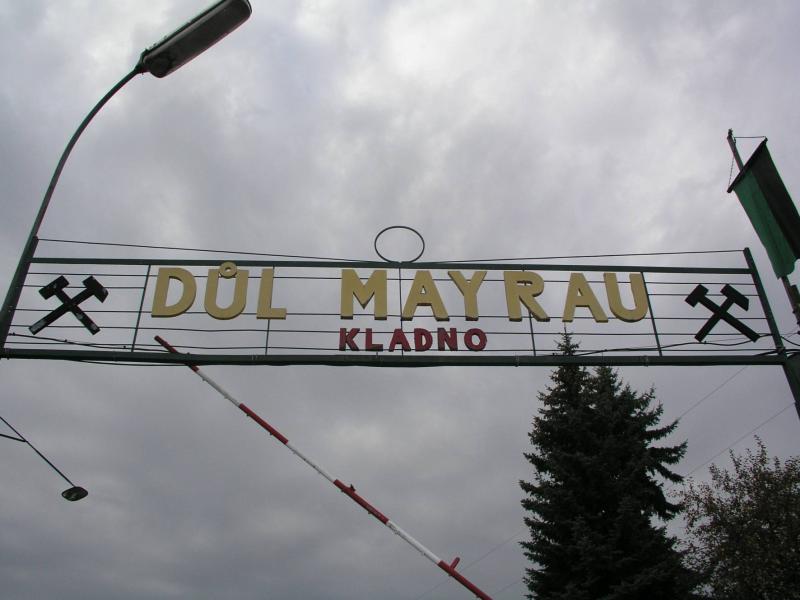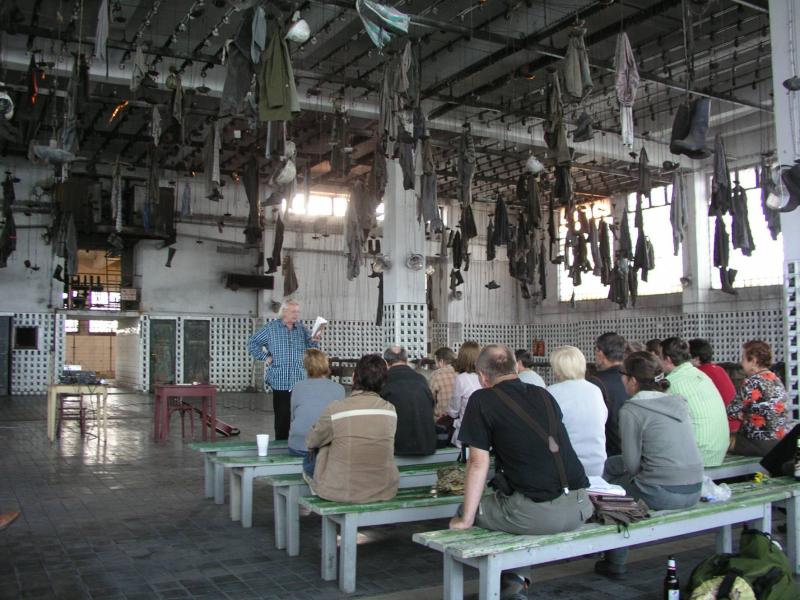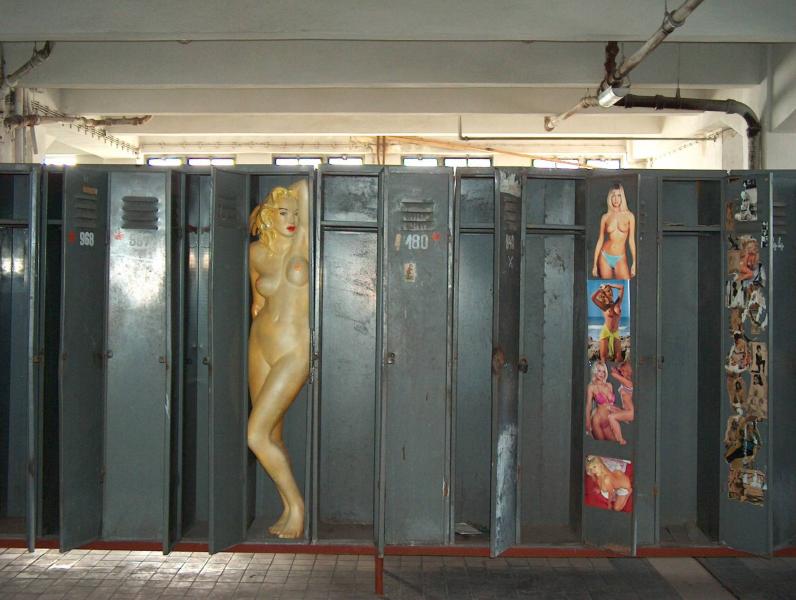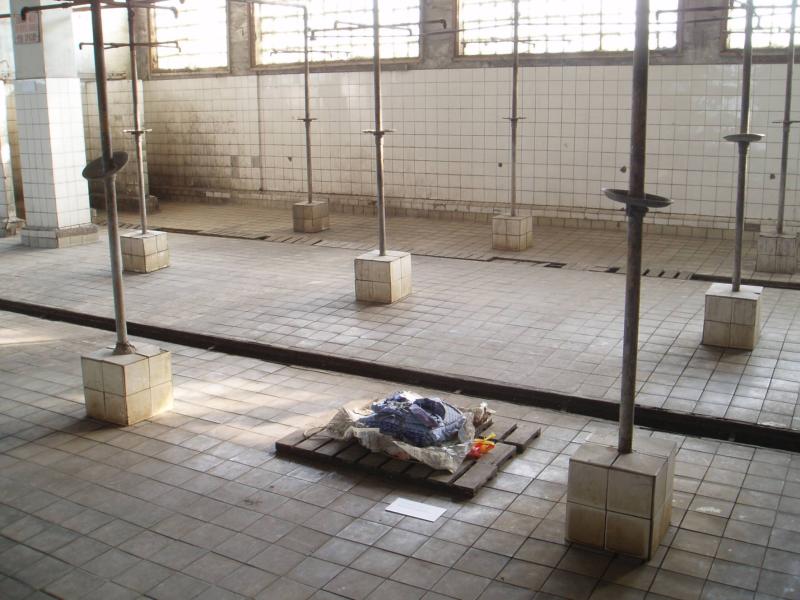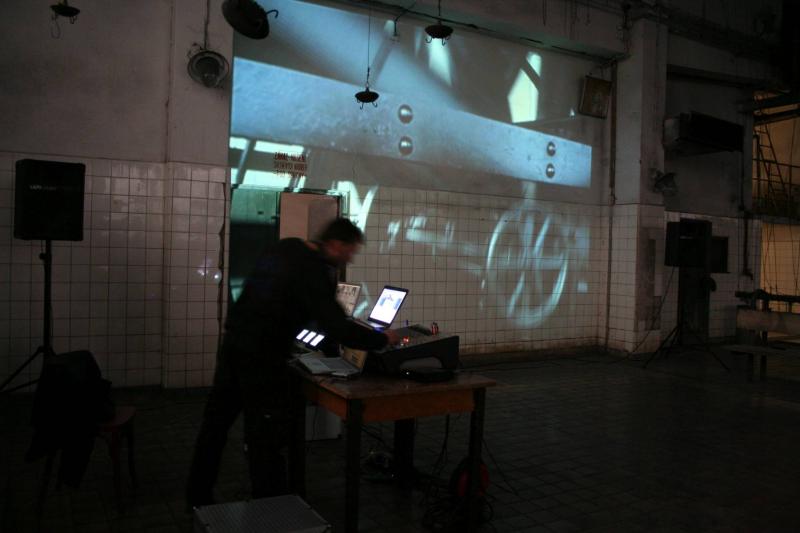Mayrau Gallery operated in 2002-2010. The program, led by artist-curator Dagmar Šubrtová, was linked to the former mining museum of the Mayrau mine in Vinařice near Kladno. In 2002, a new gallery of contemporary art was established here, specifically in the area of the former Vojtěšská smelter, under the patronage of the Arteum civic association, which organizes cultural activities commemorating the industrial history of Kladno. The harsh nature of the mine, the Kladno heaps, nature, which takes back what mining took from it, and above all the remaining material suitable for sculptural works, became a challenge for artists and for the organization of art events, symposia, plein airs and workshops. The exhibiting artists created their works not only in response to the space of the former Vojtěšská smelter, but over time they responded and used the entire area of the mining open-air museum. The works were created as an intervention in the guided tour of the open-air museum and thus connected two worlds – artists and former miners who worked in the open-air museum in the new role of guides. The gallery activity thus became part of heritage awareness with a connection to the Kurt Gebauer Sculpture Studio at the UMPRUM in Prague, where Dagmar Šubrtová worked as an assistant.
In 2002, a sculpture symposium took place in the former Mayrau mine, in which Kurt Gebauer, Dagmar Šubrtová, David Kračka, Tomáš Kůs and Lenka Klodová took part. At that time, Kurt Gebauer's Caterpillar of Capitalism was created, which is still there today. The sculptural interventions not only started from the given place and reflected it in the form of found material and site-specific art, but pointed to the artistic and social tendencies of the time. In this context, it is appropriate to recall the International Symposium on Spatial Forms in Ostrava in 1967 and 1969, which was based on the opening of the Vítkovice iron works to sculptors. For example, the sculptural style of Karel Nepraš or Aleš Veselé was fully developed here, in the area of creative work with iron. The Mayrau Gallery gave a generation of sculptors the opportunity to try out their work in a harsh industrial environment and to draw from it not only inspiration, but also abundant material. These were mainly students and graduates from Kurt Gebauer's studio at UMPRUM and invited guests - artists from all over the world.
After a certain time, cooperation developed in the Mayrau Gallery at the level of building a cultural and artistic platform in Kladno. The symbiosis of the mining and artistic communities created exceptional cultural and social events that worked with procedural art in the form of performances. Theater and music projects were also presented here, guided tours and conferences took place. The program often paired more established artists with local up-and-comers. A number of international events took place. Professional publications were published with documentation of exhibitions with an interdisciplinary overlap reflecting local specifics. For example: State of exception: Women among miners (2005), Heaps/Arizona: Remains of mining activity around Kladna: good or bad? (2006) and Black and Black Mayrau 2002-2008 (2008). Experts who collaborated with the gallery and participated in a number of texts include art historian Radoslava Schmelzová, geologist and philosopher Václav Cílek, and visual artist and theorist Miloš Vojtěchovský.
Interesting exhibitions certainly include Exceptional State: Women among miners (2005), which reflected on gender themes. It was an international event, on the occasion of which a workshop, series of lectures and an exhibition were held, within the framework of the 3rd International Biennale of Industrial Footprints 2005. Kurt Gebauer exhibited the canvases Women in Baths with reference to the political prisoners who lived here and could keep their wives just dream Dagmar Šubrtová's work dealing with the legend of St. Barbara, patroness of wreckers. The introductory text to the exhibition catalog was written by art historian Martina Pachmanová. In the catalog we also find recordings of interviews with former Mayrau mine workers.
The workshop connected with the Total Landscape exhibition became another successful project, which was carried out with a focus on the issue of the ecological and political devastation of Klagenfurt. Martin Zet offered bread sprinkled with black coal dust. He worked with the metaphor that mining was a source of livelihood, but also simultaneously devastated the space in which the miners lived. Miloš Šejn, on the other hand, collected from the heaps what the mining brought to the surface. He marked the found sediments with a card with the exact GPS location of the find and placed it in the Garden near the mining machine Robert. Václav Cílek opened the exhibition with a reflection on the totalitarian landscape as an exhausted topic, which, however, deserves deeper reflection and solution.
Artist exhibited in the gallery: Jitka Válová, Martin Zet, Veronika Bromová, Miloš Vojtěchovský, Miloš Šejn, Jan Hísek, Jonáš Czesaný, Osamu Okamura (Japan), Věra Boudníková-Špánová, Petra Valentová, Ibra Ibrahimovič, Dragan Dragin (Serbia), Lucie Krejčová, Dan Seen (USA), Arno Peeters and Iris Honderdos (Netherlands), Tarek Zaki (Egypt) and others.
In 2010, the historian Zdeněk Kuchyňka became the new director of the Mayrau Open-Air Museum, who had a different opinion on the curatorial management of the gallery than Dagmar Šubrtová. She subsequently decided to end her activities here. This ended Galerie Mayrau at the level it had been building since 2002.
(Lenka Sýkorová)
